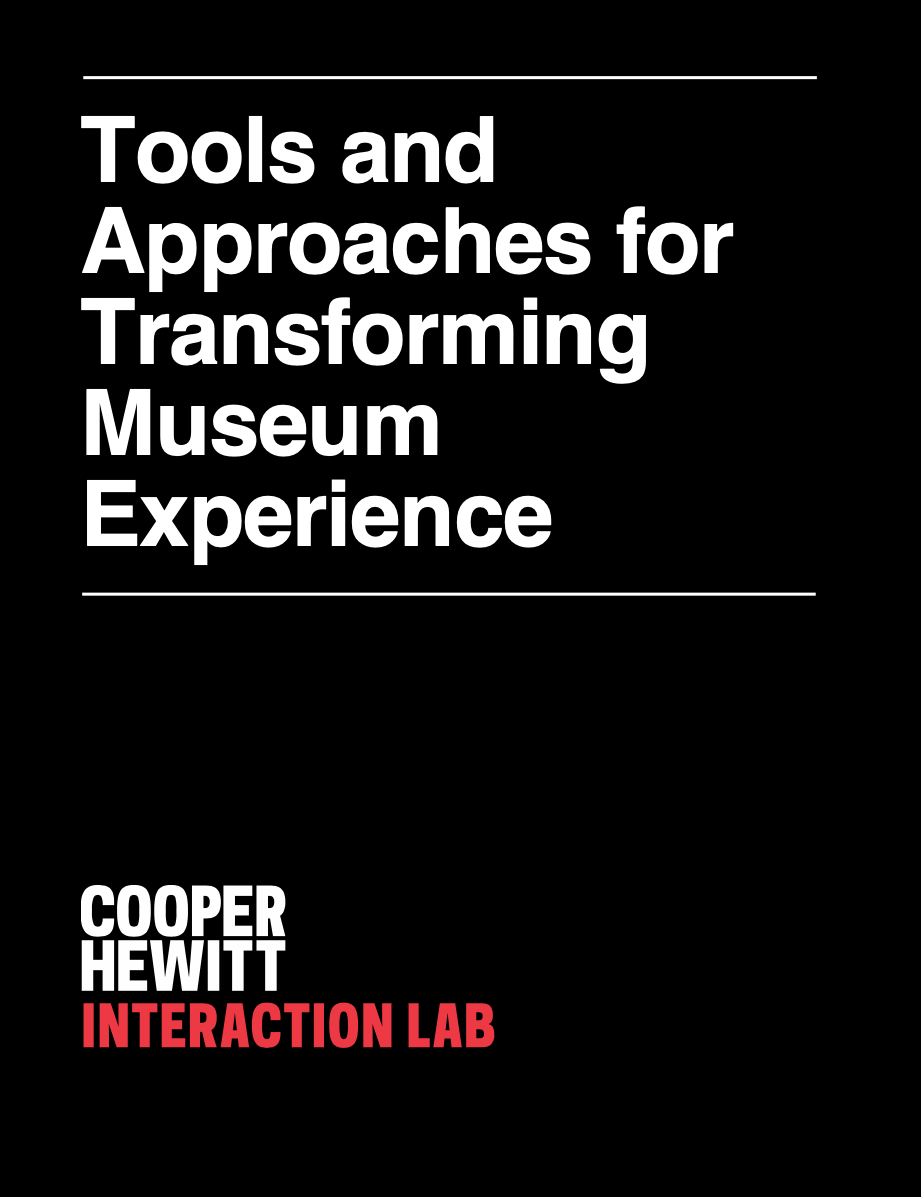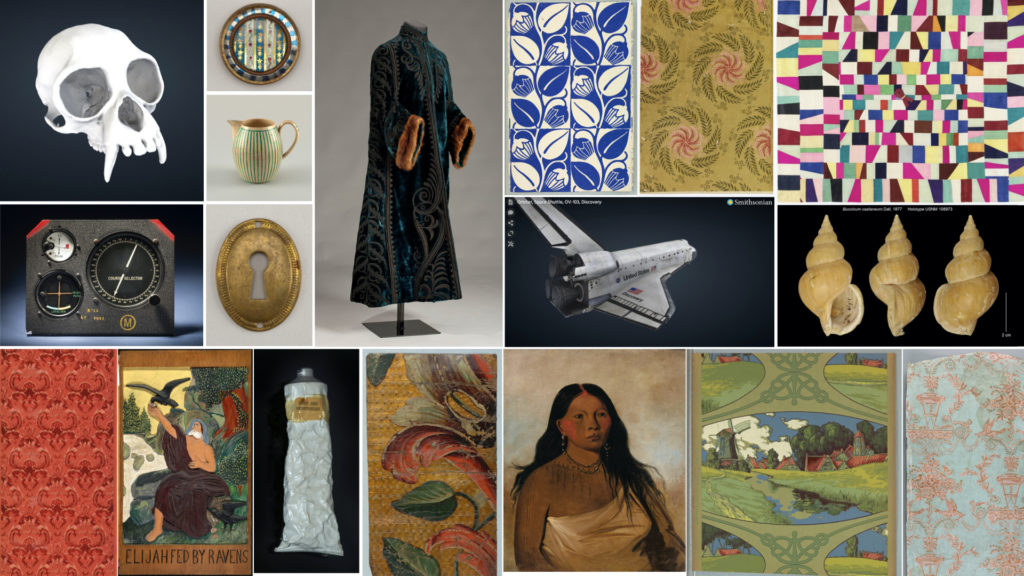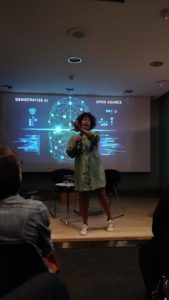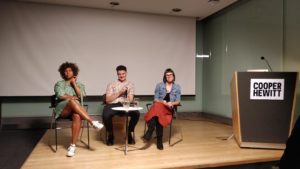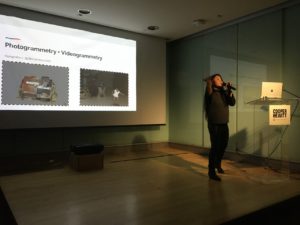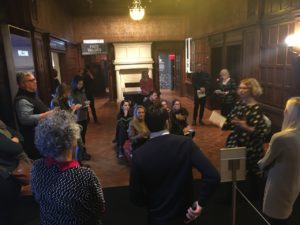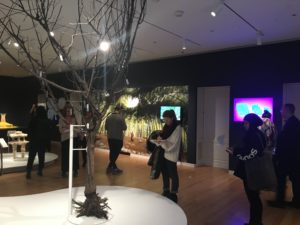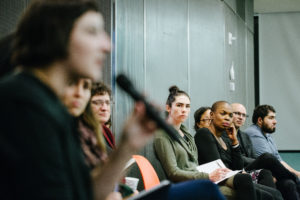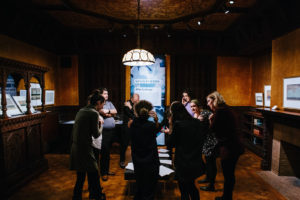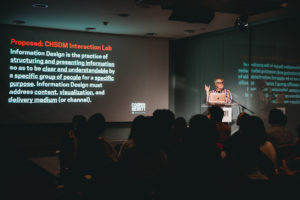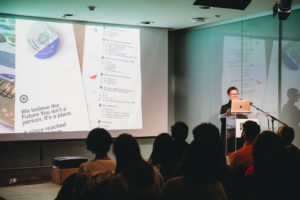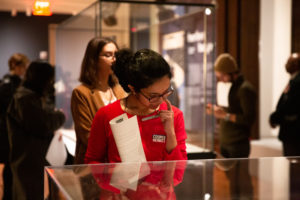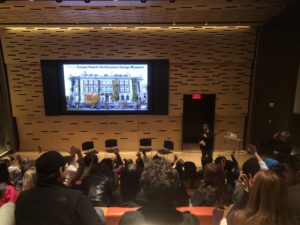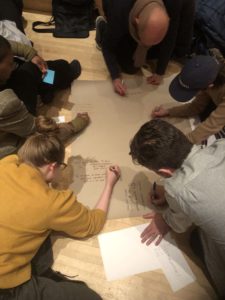The Interaction Lab
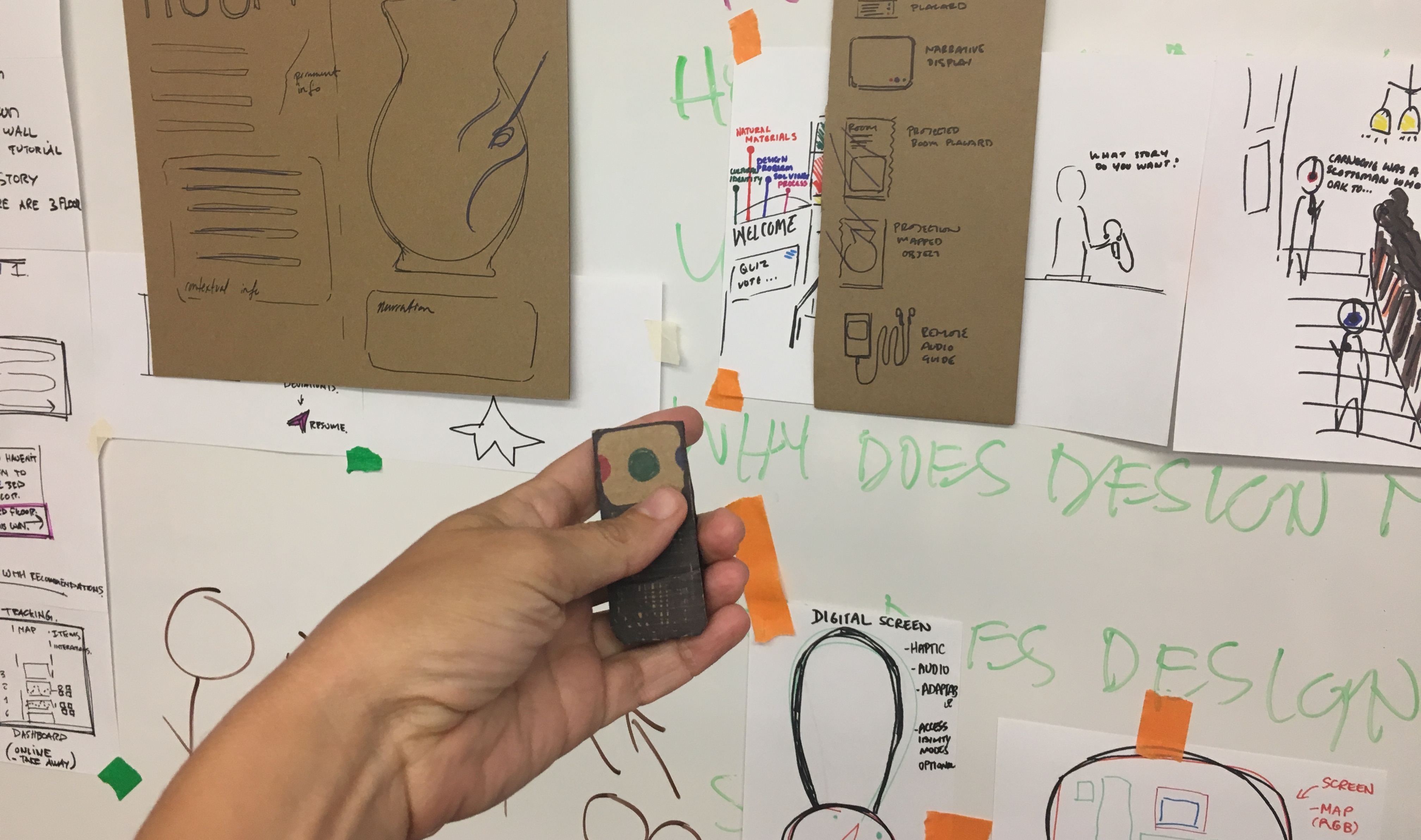
The Interaction Lab is a lab without walls—a new kind of R&D space—where we’re reimagining the museum experience for our rapidly changing times. Embedded at Cooper Hewitt, Smithsonian Design Museum, the Lab is untethered to any one location or platform is bringing holistic, interactive design methodology to the heart of the Cooper Hewitt experience—digital, physical, and human, on-site and remotely.
To do that, we’re living our mission as the nation’s design museum, tackling our own challenges openly and transparently, inviting our communities to share ideas and co-create as we keep pace with emergent developments in our world. Rather than innovation for its own sake, we’re acutely aware that an entire museum experience is itself designed cumulatively, through a series of individual interactions across platforms and environments.
Working in an open and participatory process, we develop prototypes with audiences inside our galleries; host gatherings of thinkers and practitioners across creative, technology, and museum disciplines; offer public programs that engage audiences as collaborators; launch design challenges and commissions; develop digital and physical interventions; and generate thought leadership on evolving museum experience with collaborators worldwide.
Driving the Lab’s work is an ethos of designing with and for; openness and transparency; generous, radical collaboration; and cross-disciplinary thinking.
INTERACTION LAB PROJECTS
2021: Tools and Approaches for Transforming Museum Experience
The practical, financial, and social impacts of the coronavirus alongside a national reckoning with racial injustice has increased the urgency to address why, how, and for whom museums exist in the 21st century. For museum professionals, this pivotal question raises another: how might we transform our collective approach to designing museum experiences to better reflect the diverse communities we serve? To explore this critically important conversation, Cooper Hewitt, Smithsonian Design Museum’s Interaction Lab convened a series of workshops inviting 15 museum professionals doing groundbreaking work across visitor experience-related roles, representing: curatorial, education, audience research, programming and public engagement, visitor services, exhibition design, digital, and accessibility.
Co-authored by the working group, the contents of this toolkit are drawn from discussions that emerged during all workshop sessions, some by design and some organically. It contains thoughts and ideas on why transforming museum experience is necessary, questions to help leaders and practitioners move toward designing transformative museum experiences, and tactics to help drive this work forward for audiences and communities, including useful tools and approaches from the co-authors’ areas of practice. Thanks to the support of the Samuel H. Kress Foundation for making this work possible.
2021: Activating Smithsonian Open Access (ASOA)
The Activating Smithsonian Open Access Challenge (ASOA) from Cooper Hewitt’s Interaction Lab supported creative technology teams in designing engaging interactive experiences with Smithsonian Open Access collections for people all over the globe. Made possible by Verizon 5G Labs, this open call for proposals sought to stimulate new ideas for inspiring digital interactions with over 3 million 2D and 3D objects in the Smithsonian’s Open Access collections, all available under a Creative Commons Zero (CC0) license for download, re-use, alteration, and even commercialization.
From over 102 proposals, seven finalists were selected to receive $10,000 to develop their ideas into functioning prototypes to be presented and used by the public, while creators will own all intellectual property they create in ASOA. You can try the ASOA prototypes yourself below. Learn more about how ASOA is modeling a new way to develop tools for museum audiences.
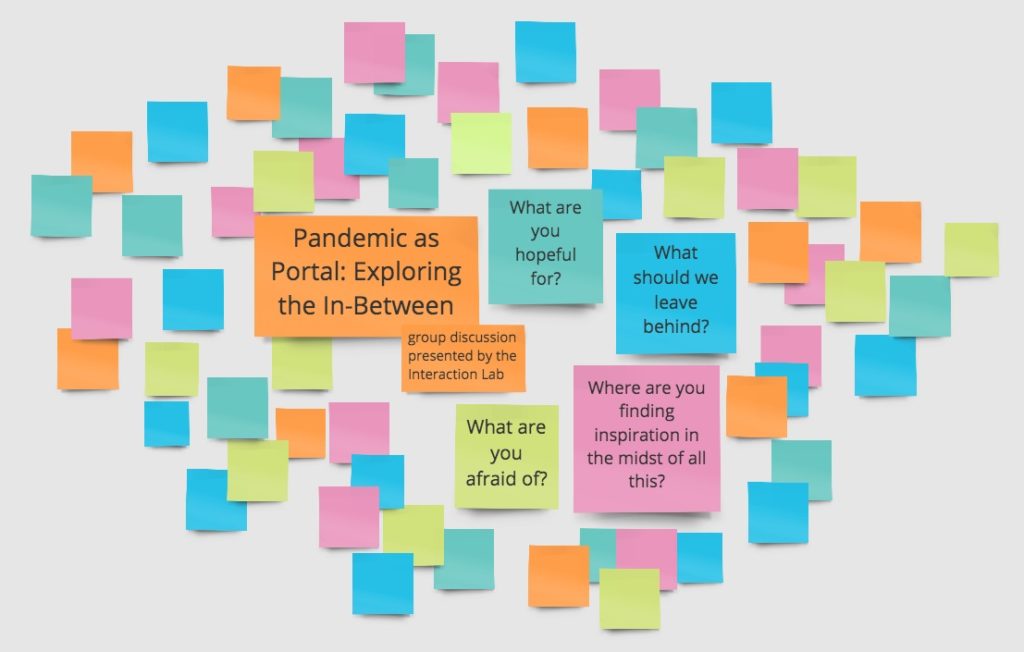
2020: Pandemic as Portal ONLINE Program series
Well before the pandemic changed everything, the Interaction Lab was committed to running large scale collaborative events. Our public program series, launched in September 2019, convened conversations and engaged participants in conversation around a wide range of topics related to the intersection between museum studies, experience design, storytelling, and emerging technology. The plan for Spring 2020 was to continue our event series with deeper exploration of the relationship between interpretation, storytelling, and information design. Then COVID-19 happened. We knew we wanted to convene our community, but needed to alter the conversation to reflect a changed world.
Pandemic as Portal was an experiential collaboration – two events in the early days of the pandemic that brought together audiences of up to 175 people from many countries for a two-hour experiment. The theme and the name was based on a now-famous section of Arundhati Roy’s Financial Times piece by that name.
Whatever it is, coronavirus has made the mighty kneel and brought the world to a halt like nothing else could. Our minds are still racing back and forth, longing for a return to “normality”, trying to stitch our future to our past and refusing to acknowledge the rupture…Historically, pandemics have forced humans to break with the past and imagine their world anew. This one is no different. It is a portal, a gateway between one world and the next. – Arundhati Roy
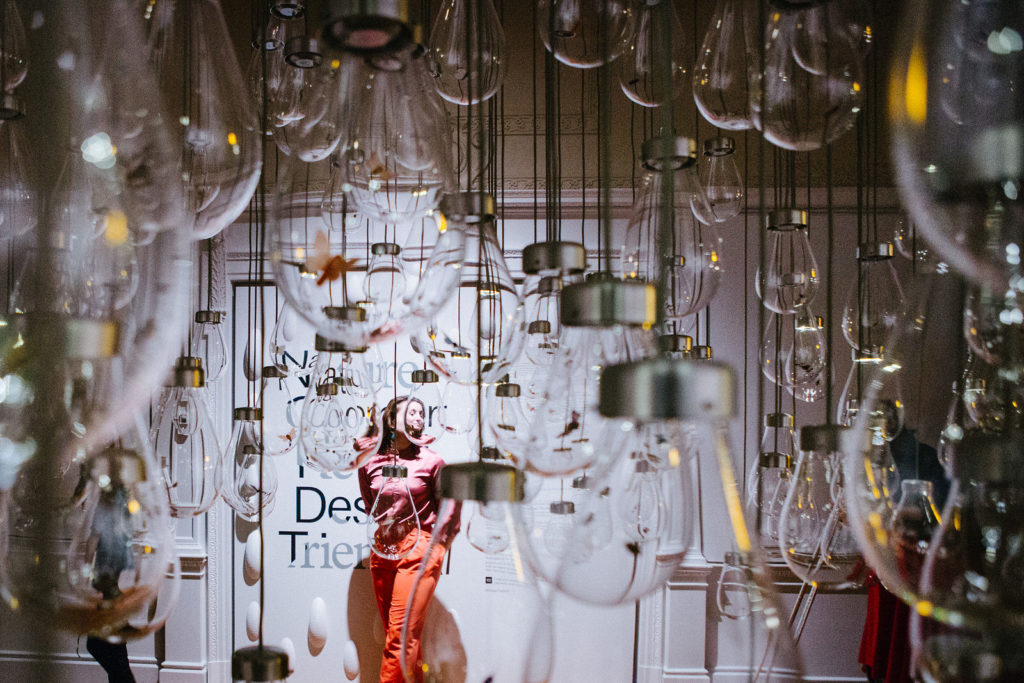
2019 – 2020: On Site-Public programming
Since the Interaction Lab’s inception, it has been a critical priority to invite a dynamic community of thinkers, doers, and learners to explore the intersection of design and museum experience. Between September of 2019 and February of 2020, the Interaction Lab held 5 public programs, inviting audiences of 65-120 for a range of programs offering highly interactive gatherings connecting design practices to the work of designing the museum experience.
September 17, 2019 – Curator, Computer, Creator: A Discussion on Museums and AI in the 21st Century
To launch our public program series, the Lab partnered with the Museums and AI Network, a UK/US collaboration of museum professionals exploring use of AI in museums, with specific emphasis on ethics and accountability. For this first event, three speakers presented different perspectives about AI: those of a Curator (Andrea Lipps, CHSDM), a “computer” (Harrison Pim, Wellcome Collection), and a creator (Karen Palmer, AI artist). To close the evening, we kept time for discussion, followed by a reception.
November 13, 2019 – Interpretation as Storytelling
For our 2nd event, we were eager to move into a participatory format, and to dig into storytelling approaches in design practice and explore how they might inform our approach to interpretation at Cooper Hewitt. The Interaction Lab invited Sr. Curator and famed graphic deisgner Ellen Lupton, Interactive Narrative Designer Nick Fortugno and Extended Reality Designer Michaela Ternasky Holland to speak about their design practices, and then conduct workshops with participants to apply those practices to the museum setting. At the end, we reconvened together to discuss our findings.
December 9, 2019 – Workshop: Bodystorming Access
The Interaction Lab invited Anna Gichan, Zazel-Chavah O’Garra, and Kayla Hamilton, a group of dancers of varying abilities, to develop participatory bodystorming workshops to explore how different bodies can and do interact with the physical space of the museum. We opened and closed the event with candid group discussion.
January 21, 2020 – Information Design for Sensemaking
Interaction Lab Founding Director, Rachel Ginsberg opened the evening with a presentation that framed the practice of information design to museum visitor experience and proposed a new definition of the practice. Then we were joined by award winning data designer Giorgia Lupi to share her work and practice. The talks were followed by a workshop and discussion with participants to explore priorities for Cooper Hewitt’s own information design process.
February 11, 2020 – Museum Storytelling: Linked Architecture and Future Interfaces
The Interaction Lab partnered with the Columbia University School of the Arts’ Digital Storytelling Lab on a meetup at the Film Center at Lincoln Center. During the first part of the evening, Carolyn Royston, Chief Experience Officer, Rachel Ginsberg, Interaction Lab Director, and Adam Quinn, Sr. Digital Product Manager pulled back the curtain on a new digital infrastructure that will present otherwise invisible design stories connecting things like exhibition themes, collection objects, research publications, even the mansion itself. Then, we moved into a 90 minute prototyping session, exploring new interfaces that would bring this newly linked information architecture to life.
To keep up with Interaction Lab activities, sign up for our mailing list.
